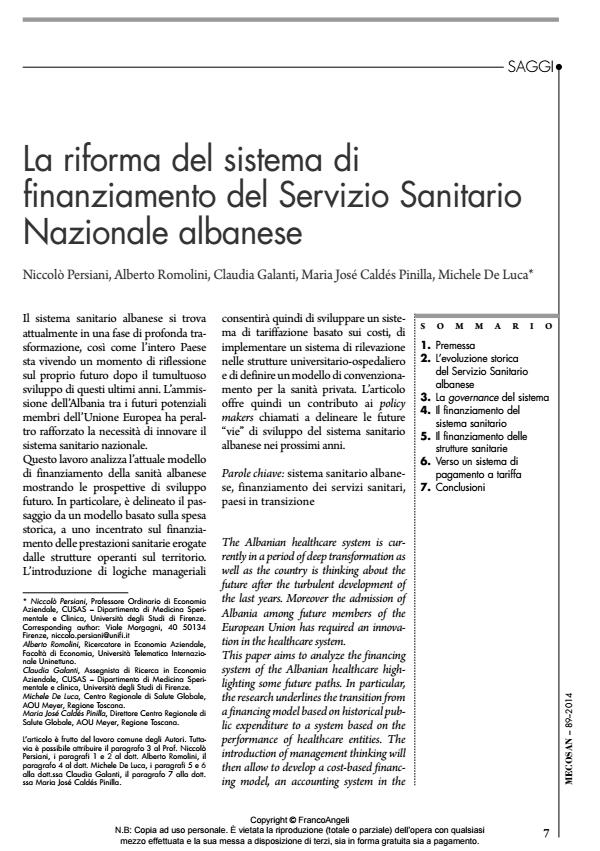La riforma del sistema di finanziamento del Servizio Sanitario nazionale albanese
Journal title MECOSAN
Author/s Niccolò Persiani, Alberto Romolini, Claudia Galanti, Maria José Caldés Pinilla, Michele De Luca
Publishing Year 2014 Issue 2014/89
Language Italian Pages 24 P. 7-30 File size 854 KB
DOI 10.3280/MESA2014-089002
DOI is like a bar code for intellectual property: to have more infomation
click here
Below, you can see the article first page
If you want to buy this article in PDF format, you can do it, following the instructions to buy download credits

FrancoAngeli is member of Publishers International Linking Association, Inc (PILA), a not-for-profit association which run the CrossRef service enabling links to and from online scholarly content.
The Albanian healthcare system is currently in a period of deep transformation as well as the country is thinking about the future after the turbulent development of the last years. Moreover the admission of Albania among future members of the European Union has required an innovation in the healthcare system. This paper aims to analyze the financing system of the Albanian healthcare highlighting some future paths. In particular, the research underlines the transition from a financing model based on historical public expenditure to a system based on the performance of healthcare entities. The introduction of management thinking will then allow to develop a cost-based financing model, an accounting system in the teaching hospitals and, finally, a financing system able to pay for services provided by private healthcare entities. The article then offers a contribution to policy makers in order to define the future "paths" of the Albanian healthcare system in the next years.
Keywords: Albanian healthcare system, healthcare financing system, transition economies
- The emergency medical services network’s response to the COVID-19 pandemic in Albania Niccolò Persiani, Martina Giusti, Francesco Taiti, Andrea Biancalani, Michele De Luca, Maria José Caldés Pinilla, in Frontiers in Public Health 1568639/2025
DOI: 10.3389/fpubh.2025.1568639
Niccolò Persiani, Alberto Romolini, Claudia Galanti, Maria José Caldés Pinilla, Michele De Luca, La riforma del sistema di finanziamento del Servizio Sanitario nazionale albanese in "MECOSAN" 89/2014, pp 7-30, DOI: 10.3280/MESA2014-089002